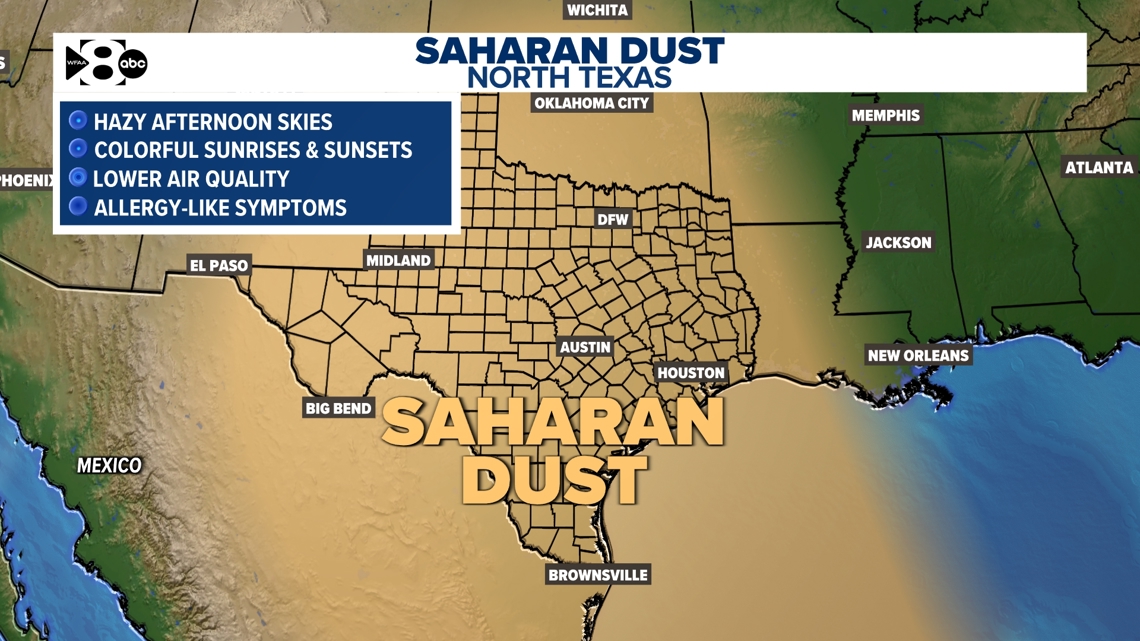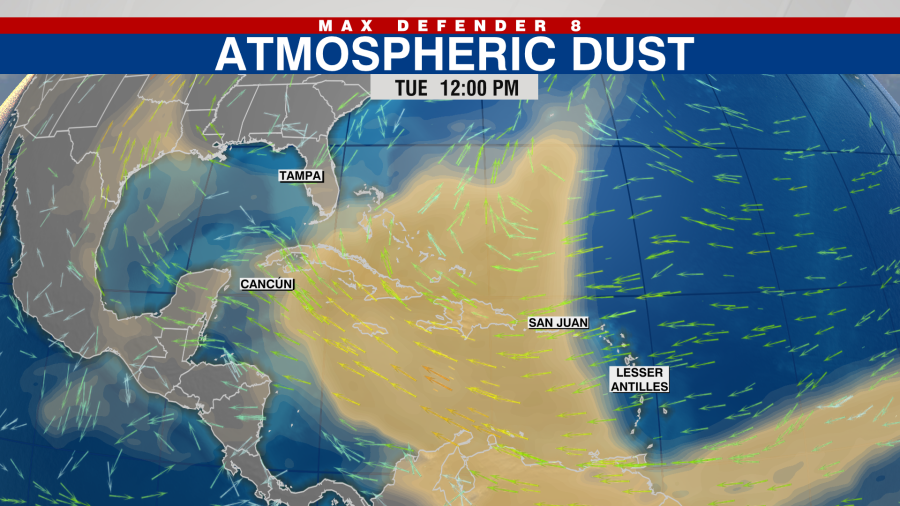North Texas Dust: Saharan Dust's Transatlantic Trek Explained

Welcome to your ultimate source for breaking news, trending updates, and in-depth stories from around the world. Whether it's politics, technology, entertainment, sports, or lifestyle, we bring you real-time updates that keep you informed and ahead of the curve.
Our team works tirelessly to ensure you never miss a moment. From the latest developments in global events to the most talked-about topics on social media, our news platform is designed to deliver accurate and timely information, all in one place.
Stay in the know and join thousands of readers who trust us for reliable, up-to-date content. Explore our expertly curated articles and dive deeper into the stories that matter to you. Visit Best Website now and be part of the conversation. Don't miss out on the headlines that shape our world!
Table of Contents
North Texas Dust: Saharan Dust's Transatlantic Trek Explained
North Texas residents recently experienced a dramatic shift in air quality, a hazy orange sky replacing the usual blue. This wasn't local pollution; it was a dramatic demonstration of nature's power, a vast plume of Saharan dust making its transatlantic trek across the ocean. This phenomenon, while visually striking, also raises concerns about air quality and potential health impacts. Let's delve into the science behind this incredible journey.
What is Saharan Dust?
Saharan dust, also known as the Saharan Air Layer (SAL), originates from the vast deserts of North Africa, specifically the Sahara Desert. Strong winds lift fine sand and dust particles high into the atmosphere. This dust, composed of mineral particles like clay and silt, can be transported thousands of miles by prevailing winds. These particles are incredibly fine, sometimes microscopic, allowing them to remain suspended in the air for extended periods.
The Transatlantic Journey:
The journey of Saharan dust across the Atlantic is a complex meteorological event. The prevailing trade winds, fueled by atmospheric pressure differences, carry the dust plume westward across the ocean. The process is often aided by strong weather systems and jet streams that act as atmospheric conveyor belts, transporting the dust thousands of miles to North America and beyond.
Impact on North Texas:
The arrival of Saharan dust in North Texas results in several noticeable effects:
- Reduced Air Quality: The dust particles contribute to poorer air quality, especially for those with respiratory conditions like asthma. [Local news sources often report on air quality indices during these events, so checking your local news is recommended].
- Hazier Skies: The most visually striking impact is the hazy, orange-tinged sky, a dramatic change from the usual blue. Sunrise and sunset can appear more vibrant and intense due to the scattering of light by the dust particles.
- Potential Health Concerns: Individuals with respiratory problems should take precautions, such as limiting outdoor activities and using inhalers as needed. The fine dust particles can irritate lungs and worsen existing conditions. Consult your doctor if you experience respiratory issues.
Beyond the Visual Spectacle: Environmental Impacts
While the hazy skies capture attention, the impact of Saharan dust extends beyond the immediate visual.
- Nutrient Delivery: Ironically, Saharan dust plays a crucial role in fertilizing ecosystems in the Americas and even the Amazon rainforest. The dust particles contain vital nutrients like iron and phosphorus, which are deposited in the soil, supporting plant growth. This highlights the complex interplay of global weather patterns and their influence on ecosystems.
- Climate Change Implications: Research is ongoing to understand the full impact of Saharan dust on climate change. The dust particles can influence cloud formation and affect the Earth's albedo (reflectivity), potentially impacting global temperatures. [Link to relevant scientific studies on this topic].
Staying Informed and Safe:
Staying informed about Saharan dust events is crucial, especially for vulnerable populations. Monitor your local weather reports and air quality indices for updates. If air quality is poor, consider limiting outdoor activities, particularly strenuous ones.
Keywords: Saharan dust, North Texas dust storm, Saharan Air Layer (SAL), transatlantic dust, air quality, respiratory health, weather patterns, climate change, environmental impact, orange sky, hazy skies.
Call to Action (subtle): Check your local news and weather for updates on air quality during periods of Saharan dust presence in your area. Being prepared is key to protecting your health.

Thank you for visiting our website, your trusted source for the latest updates and in-depth coverage on North Texas Dust: Saharan Dust's Transatlantic Trek Explained. We're committed to keeping you informed with timely and accurate information to meet your curiosity and needs.
If you have any questions, suggestions, or feedback, we'd love to hear from you. Your insights are valuable to us and help us improve to serve you better. Feel free to reach out through our contact page.
Don't forget to bookmark our website and check back regularly for the latest headlines and trending topics. See you next time, and thank you for being part of our growing community!
Featured Posts
-
 Slower Than Expected Newark Airports Air Traffic Control Modernization
May 31, 2025
Slower Than Expected Newark Airports Air Traffic Control Modernization
May 31, 2025 -
 Understanding The Saharan Dust Event Preparing For Its Arrival In Florida
May 31, 2025
Understanding The Saharan Dust Event Preparing For Its Arrival In Florida
May 31, 2025 -
 Major League Baseball Power Rankings Week 9 Analysis And Top 10
May 31, 2025
Major League Baseball Power Rankings Week 9 Analysis And Top 10
May 31, 2025 -
 Sloane Stephens Jell O Arms A Look At The Physical Toll Of Professional Tennis
May 31, 2025
Sloane Stephens Jell O Arms A Look At The Physical Toll Of Professional Tennis
May 31, 2025 -
 De Boer Seeks Spark To Ignite Stars After Oettingers Rough Start
May 31, 2025
De Boer Seeks Spark To Ignite Stars After Oettingers Rough Start
May 31, 2025
